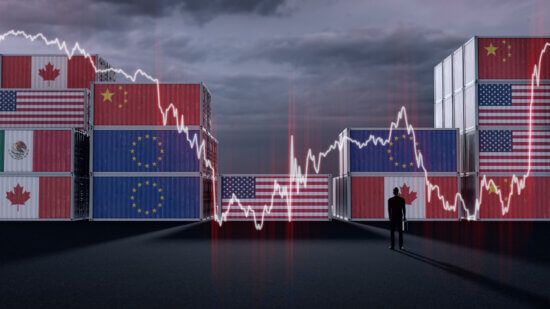
In an unpredictable economic setting, the U.S. labor market faces recession fears and inflation, with investors navigating uncertainty and potential volatility.
The economic landscape has been anything but predictable in recent months. With the resilience of the U.S. labor market and inflation trends, market participants are closely monitoring the potential onset of a recession, the Federal Reserve’s rate decisions, and the unusual tranquility in market volatility.
Shifting Recession Expectations
The possibility of a U.S. recession has been a topic of debate among market analysts, and recent labor market resilience has added complexity to these predictions. Despite the tightening of liquidity due to higher interest rates and the contraction of the Federal Reserve’s balance sheet, which have contributed to a slowdown in economic activity in 2023, the timing of a recession remains uncertain. There are growing expectations that the slowdown could transition into a recession by early 2024, yet the exact timing remains elusive, much like predicting when an apple will fall from a tree.
The Fed’s Stubborn Battle with Inflation
Inflation in the U.S. has shown signs of easing, particularly in goods, where prices have stabilized within the Fed’s comfort zone of 2%. However, the services sector, heavily influenced by a tight labor market, continues to push overall inflation above this target. The Federal Reserve’s response has been cautious, adjusting to the evolving economic environment by closely monitoring labor market conditions and key indicators like the quits rate and job vacancies relative to unemployment.
This reactive stance from the Fed comes as the nation emerges from what can be described as an unprecedented monetary and social experiment. The period of borrowing at historically low rates has ended, with the Fed aiming to recalibrate the cost of money. As inflation hovers stubbornly above 2%, and with the central bank looking to bring it down to a more manageable range of 3.5% to 4%, further rate hikes in 2023 seem likely. This could also result in a longer pause in rate adjustments than markets had previously anticipated.
The Eerie Calm in Market Volatility
Market volatility has been conspicuously low in recent months, a common occurrence in recovering or rising markets. However, this calm may not last as a potential recession looms on the horizon. Historically, volatility tends to be episodic, remaining subdued until an unforeseen event triggers a sharp spike. The current environment has been described as a “Goldilocks” scenario, where low expectations entering the year have been met with positive growth despite the Fed’s rate hikes and a favorable disinflationary backdrop.
As the year progresses, the key question is how far inflation will decline and what level of economic contraction will be necessary to achieve this. Given the uncertainty surrounding these factors, it is likely that market volatility will increase as the prospect of a recession draws nearer. However, the exact timing of this shift remains difficult to predict, adding another layer of complexity to an already uncertain economic outlook.
In conclusion, the interplay between recession expectations, Federal Reserve actions, and market volatility presents a challenging environment for investors. The resilience of the labor market, the Fed’s cautious approach to inflation, and the calm in market volatility all point to a period of heightened uncertainty as we move through the latter half of the year. How these factors will ultimately converge remains to be seen, but one thing is clear: the coming months will require careful attention and adaptability from all market participants.
Discover more about:
More Insights

Mid-Year Global Equity Outlook: Diminishing U.S. Exceptionalism Leads to Non-U.S. Opportunities

Mid-Year Fixed Income Outlook: Uncertainty Yields Tight Credit Spreads

Tariffs, Stagflation, and the Fed: A Spotlight on Investors’ Most Pressing Questions

How We Invest: Active by Nature. Disciplined by Design.

Thornburg Income Builder Opportunities Trust Announces Distribution
